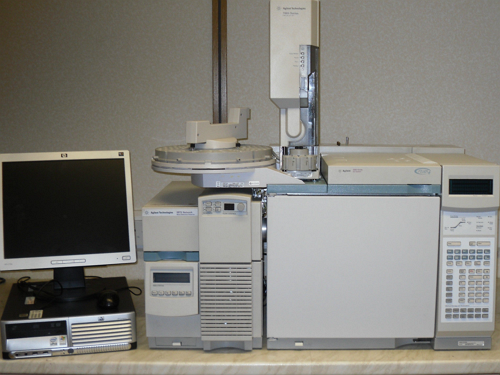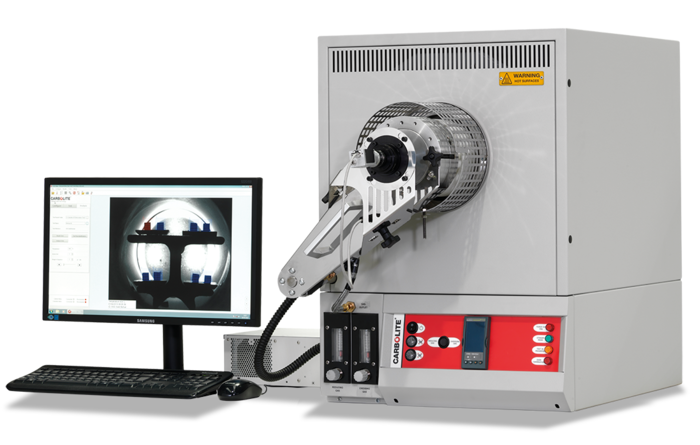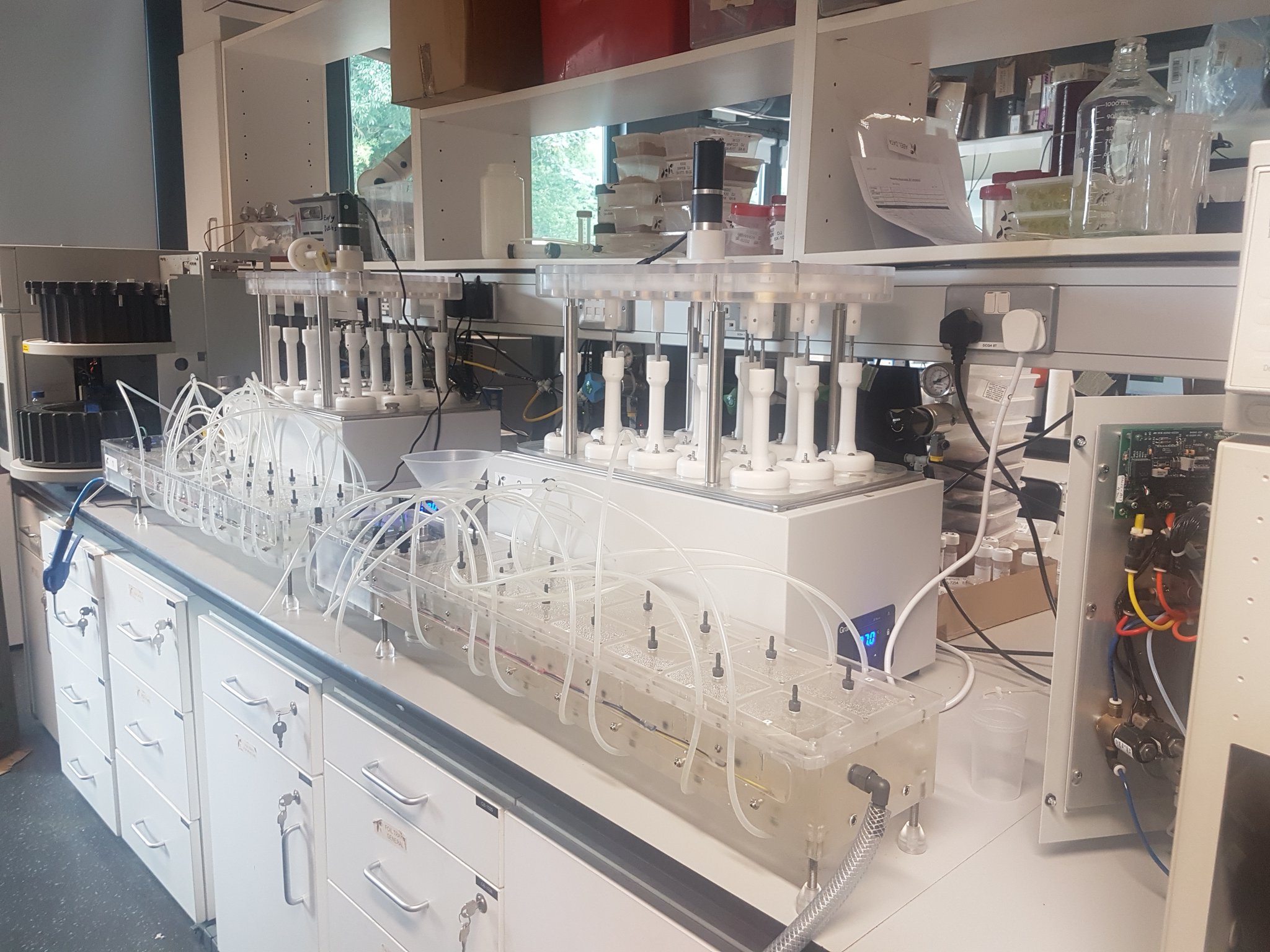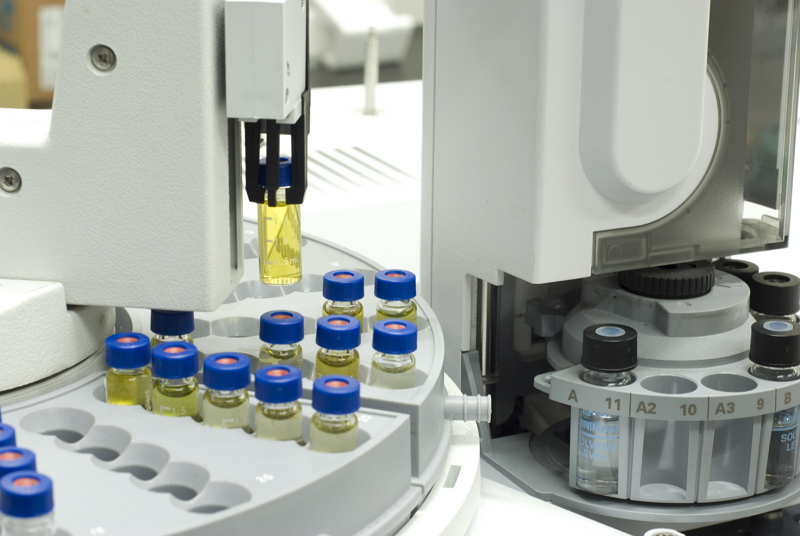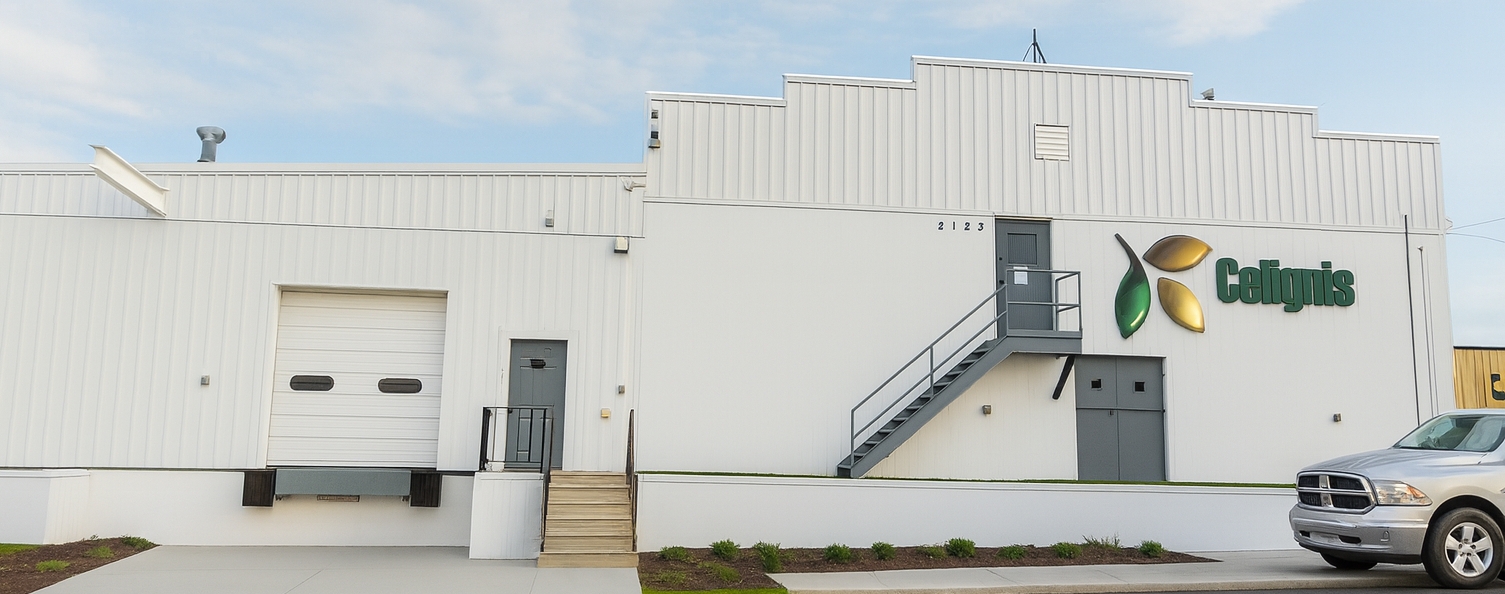Equipment Gas Chromatograph with Mass Spectrometer (GC-MS)
Gas Chromatography
Gas-liquid chromatography, usually referred to as gas chromatography (GC), is a type of column chromatography where the absorbing, stationary, medium is a liquid of low-volatility, called the liquid phase, and this is dispersed over the surface of an inert solid support which does not itself adsorb the components but which merely acts to hold the liquid phase in a stable dispersed form so as to present a large contact area.
GC involves the sample being vaporised and injected into the head of the chromatographic column. The sample is introduced to the column via an injection port and the volatile mixture is transported through the column by a chemically inert gas carrier gas. The components of the mixture are distributed between the gaseous and liquid phases and so travel more slowly than the carrier gas stream due to the retarding effect of the liquid phase. These phase differences allow considerably faster separations to be carried out than can be achieved in liquid-chromatography. Given a column of sufficient length the components will become separated as a result of differences in the retarding effect.
In the Celignis laboratory we use an Agilent 680 GC equipped with the ability to operate two detectors simultaneously. One of these is a flame ionisation detector (FID) which is selective for most organic compounds, has a high sensitivity, a large linear response range, and produces little noise. The effluent from the column is mixed with hydrogen and air, and ignited. The organic compounds that burn in the flame produce ions and electrons that conduct electricity through the flame, a large electrical potential is applied at the burner tip and a collector electrode is located above the flame. This allows the current to be measured. Given that FIDs are mass sensitive and not concentration sensitive, changes in the gas flow rate do not affect the response of the detector. However, FIDs are only suitable for compounds containing hydrocarbons due to the ability of the carbons to form cations and electrons upon pyrolysis, so allowing for a current to be generated between the electrodes. Also, as the FID results in the combustion of the effluent, it is not possible to undertake mass spectrometer analysis when this detector is used alone.
The second detector is a Thermal Conductivity Detector (TCD) which functions based on the thermal conductivity of the contents of the passing gas flow. We typically use helium as the carrier gas when using this detector since it has a relatively high thermal conductivity. Hence, when the analytes elute from the column they will result in a decrease in the thermal conductivity and an associated response in the detector. The sensitivity of the detector decreases as gas flow increases. Since TCDs do not change the composition of the passing compounds, the output of the GC can then be fed to the Mass Spectrometer (MS) for further analysis.
Mass Spectrometry
If two molecules have the same retention time GC equipment cannot differentiate between these as only a singular peak will be seen. Mass Spectrometry (MS), however, involves the breaking up of these molecules into ionized fragments, with known characteristic fragmentations associated with different molecules. These fragments are distinguished according to their mass to charge ratio, visualised on a mass spectrum, which plots the ion signal as a function of this ratio.
Use of the GC-MS system at Celignis
Currently, we our using our GC-MS for the analysis of bio-oils produced from pyrolysis processes. We are also working on using this device to develop a range of other analytical techniques for various products and analytes of relevance to the biomass and biofuels sector. If you would like us to undertake a custom analysis using this system then please get in touch.
Analysis Packages that Use Our Gas Chromatograph with Mass Spectrometer (GC-MS)
Electrical Conductivity, Water Holding Capacity, pH, Liming, Germination Inhibition, Cation Exchange Capacity, Scanning Electron Microscopy (SEM) Image, Time to Germination, Mean Shoot Length (Week 1), Mean Shoot Length (Week 2), Mean Shoot Length (Week 3), Mean Shoot Length (Week 4), Shoot Weight (Week 4), Mean Root Length (Week 4), Root Weight (Week 4), Acenaphthene, Acenaphthylene, Anthracene, Benz[a]anthracene, Benzo[b]fluoranthene, Benzo[k]fluoranthene, Benzo[ghi]perylene, Benzo[a]pyrene, Chrysene, Dibenz[a,h]anthracene, Fluoranthene, Fluorene, Indeno[1,2,3-cd]pyrene, 1-Methylnaphthalene, 2-Methylnaphthalene

